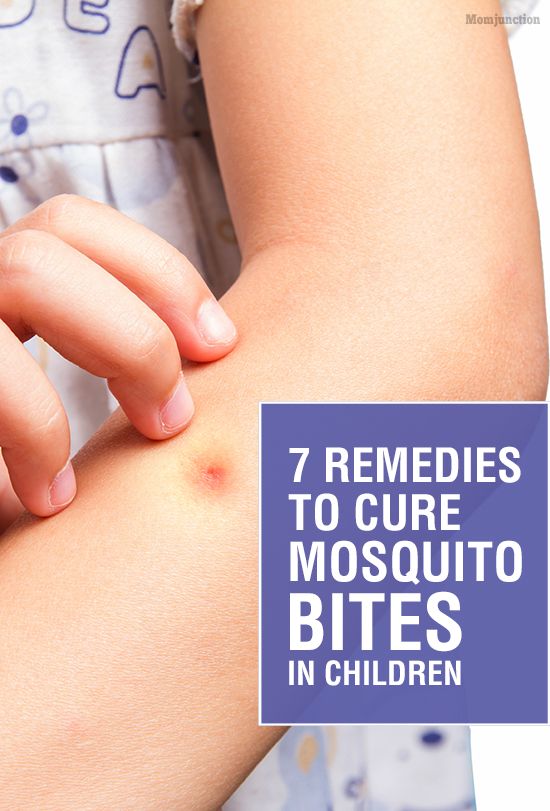Mosquito bite like bumps on arms. Itchy Bumps on Skin: Causes, Treatments, and When to See a Doctor
What causes itchy bumps that look like mosquito bites. How to identify and treat common skin conditions that cause itchy rashes. When should you see a doctor for unexplained skin bumps.
Common Causes of Itchy Bumps on Skin
Many people experience itchy bumps on their skin that resemble mosquito bites at some point. While mosquitoes are often the culprit, several other conditions can cause similar symptoms. Understanding the potential causes can help you identify the issue and seek appropriate treatment.
Hives (Urticaria)
Hives, medically known as urticaria, are a common cause of itchy, raised bumps on the skin. They affect approximately 20% of people at some point in their lives. Hives typically appear as red, purple, or skin-colored welts that can appear and disappear quickly anywhere on the body.
What triggers hives? Common causes include:
- Food allergies (e.g., peanuts, tree nuts, seafood)
- Latex
- Pollen
- Insect bites or stings
- Certain plants
- Medications (e.g., sulfa drugs, aspirin)
How can you identify hives? Hives have a characteristic appearance:

- Raised, itchy bumps
- Turn white or disappear when pressed
- Can appear and disappear quickly
- May move around the body
Treating Itchy Skin Conditions
The treatment for itchy skin conditions depends on the underlying cause. However, some general self-care practices can help provide relief:
- Avoid scratching the affected area
- Take frequent lukewarm baths
- Use gentle, hypoallergenic soap
- Limit sun exposure
- Apply cold compresses
- Wear loose-fitting clothing
For hives specifically, treatment options may include:
- Avoiding known triggers
- Using anti-itch lotions
- Taking over-the-counter antihistamines
- Using prescription antihistamines or corticosteroids for severe cases
- Carrying an epinephrine auto-injector for severe allergic reactions
Bed Bug Bites: A Common Culprit
Bed bug bites can often be mistaken for mosquito bites. These tiny insects feed on human blood and can cause itchy, red bumps on the skin. How can you tell if bed bugs are the cause of your skin irritation?
Signs of bed bug infestation include:

- Bites appearing in a straight line or cluster
- Visible bed bugs on mattresses or sheets
- Dead bed bugs or shed skins
- Blood spots on bedding
- A characteristic musty odor
Is there a specific treatment for bed bug bites? In most cases, bed bug bites don’t require special treatment. Self-care measures include:
- Avoiding scratching
- Applying over-the-counter antiseptic ointments
- Taking antihistamines to reduce itching
However, addressing the bed bug infestation is crucial to prevent further bites. This often requires professional pest control services.
Contact Dermatitis: When Your Skin Reacts
Contact dermatitis is an allergic reaction that occurs when your skin comes into contact with a substance it’s sensitive to. This condition can cause itchy bumps that may be mistaken for insect bites.
What are common triggers for contact dermatitis?
- Latex
- Certain metals (e.g., nickel)
- Household products
- Cosmetics and skincare products
- Plants (e.g., poison ivy)
How does contact dermatitis differ from other itchy skin conditions? Contact dermatitis often has these characteristics:
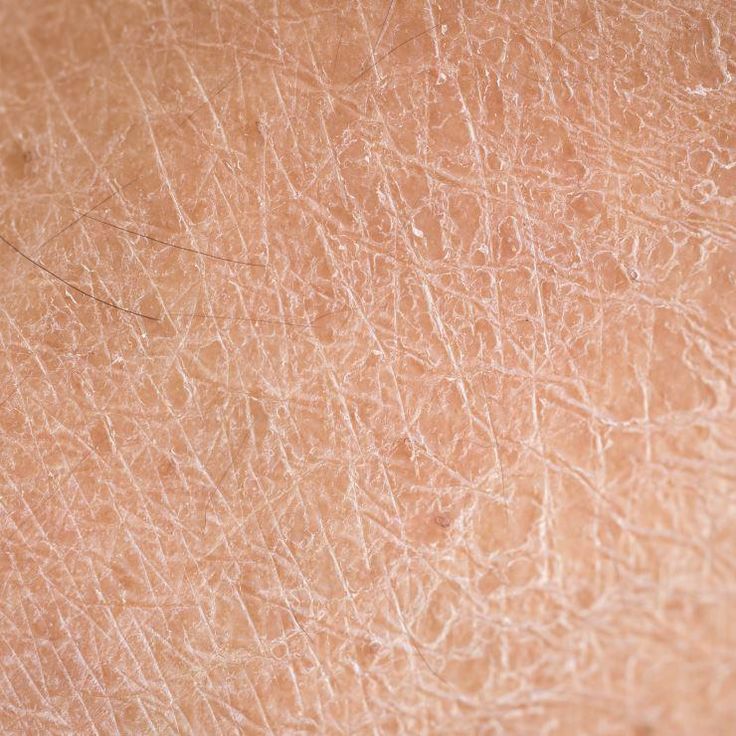
- It can be painful as well as itchy
- The affected area may be inflamed or blistered
- Symptoms typically appear 1-2 days after exposure
- It can take 2-3 weeks for symptoms to disappear
Treatment for contact dermatitis focuses on relieving symptoms and avoiding triggers. Options include:
- Applying cold compresses
- Using calamine lotion
- Taking soothing baths
- Using prescription antihistamines or cortisone for severe cases
- Identifying and avoiding triggers
Scabies: Tiny Mites, Big Problems
Scabies is a skin condition caused by the human itch mite. These microscopic parasites burrow into the top layer of skin, causing intense itching and a rash that can resemble mosquito bites.
How can you identify scabies?
- Intense itching, especially at night
- A pimple-like rash
- Visible burrow tracks on the skin (thin, grayish, or skin-colored lines)
- Common sites include hands, wrists, elbows, armpits, waist, and genitals
Is scabies contagious? Yes, scabies spreads through close skin-to-skin contact. It’s important to treat not only the affected person but also their close contacts to prevent reinfestation.

Treatment for scabies typically involves:
- Prescription scabicide medications (usually applied to the entire body)
- Washing all bedding, clothing, and towels in hot water
- Vacuuming carpets and upholstered furniture
- Treating all household members and close contacts simultaneously
When to See a Doctor for Itchy Skin Bumps
While many causes of itchy skin bumps can be managed at home, certain situations warrant medical attention. When should you consult a healthcare professional?
- If the rash is widespread or rapidly spreading
- If you experience signs of infection (e.g., fever, pus, increased pain)
- If the itching is severe and interferes with daily life or sleep
- If you have a known severe allergy and suspect exposure
- If symptoms persist despite home treatment
- If you suspect scabies or another contagious condition
A healthcare provider can accurately diagnose the cause of your skin condition and recommend appropriate treatment. They may perform tests, such as skin scrapings or allergy tests, to determine the underlying cause.
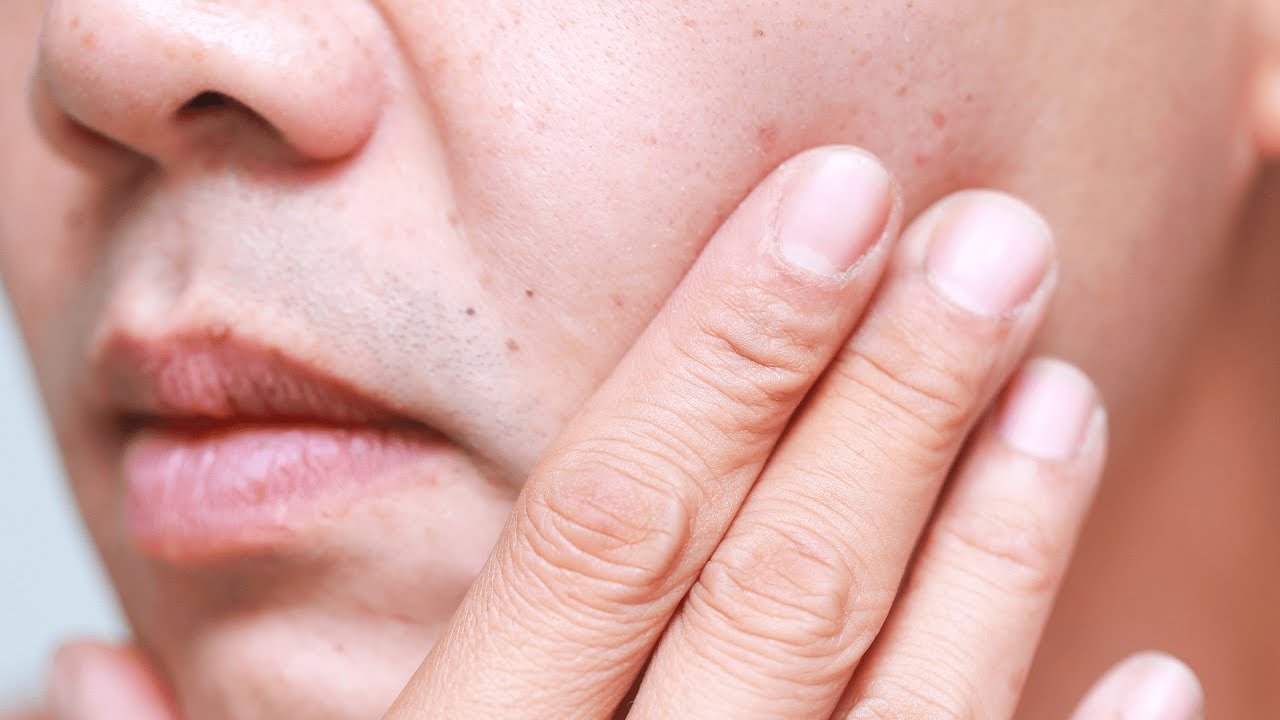
Prevention Strategies for Itchy Skin Conditions
While it’s not always possible to prevent itchy skin conditions, certain strategies can help reduce your risk:
- Identify and avoid known allergens or irritants
- Use gentle, fragrance-free skincare products
- Keep your skin moisturized
- Wear protective clothing when working with potential irritants
- Manage stress, as it can exacerbate some skin conditions
- Use insect repellent and take precautions to avoid bug bites
- Practice good hygiene to prevent infestations like scabies
By understanding the potential causes of itchy skin bumps and taking preventive measures, you can minimize your risk of developing these uncomfortable conditions.
Natural Remedies for Itchy Skin Relief
While medical treatments are often necessary for persistent or severe skin conditions, several natural remedies may provide relief for mild cases of itchy skin:
Oatmeal Baths
Colloidal oatmeal has anti-inflammatory properties that can soothe itchy skin. How do you prepare an oatmeal bath?
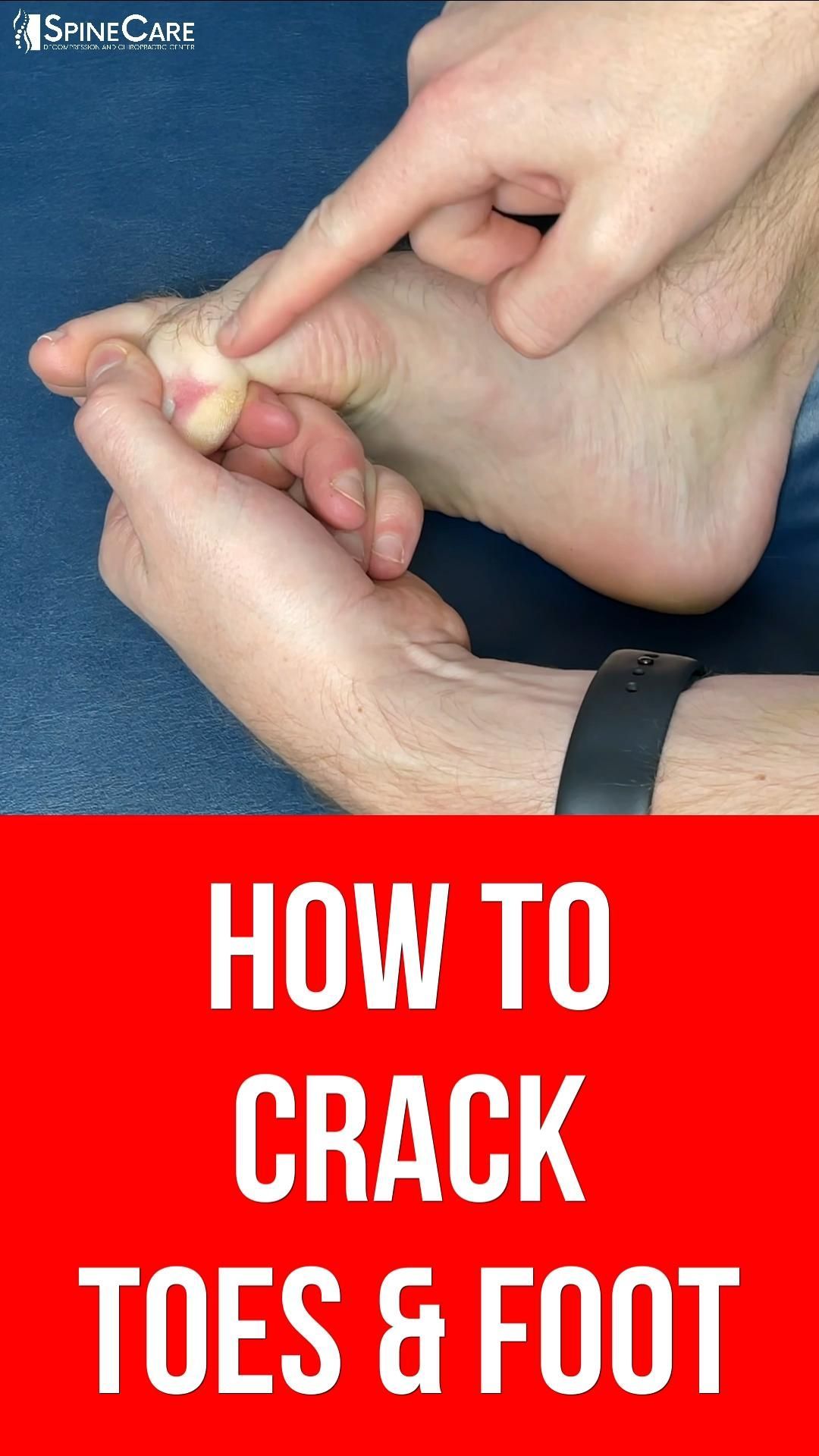
- Grind plain, unflavored oats into a fine powder
- Add 1 cup of oatmeal to lukewarm bathwater
- Soak in the bath for 10-15 minutes
- Gently pat your skin dry afterward
Aloe Vera
Aloe vera gel has cooling and anti-inflammatory properties that can help relieve itching and inflammation. You can apply pure aloe vera gel directly to the affected area several times a day.
Cool Compresses
Applying a cool, damp cloth to itchy areas can provide immediate relief and help reduce inflammation. Avoid using ice directly on the skin, as this can cause damage.
Essential Oils
Some essential oils have anti-inflammatory and soothing properties that may help with itchy skin. Which essential oils are beneficial for skin irritation?
- Peppermint oil
- Chamomile oil
- Lavender oil
- Tea tree oil
Always dilute essential oils with a carrier oil before applying to the skin, and perform a patch test to check for any adverse reactions.
The Role of Diet in Skin Health
Your diet can play a significant role in your skin’s health and its susceptibility to irritation and allergic reactions. How can you support your skin through nutrition?
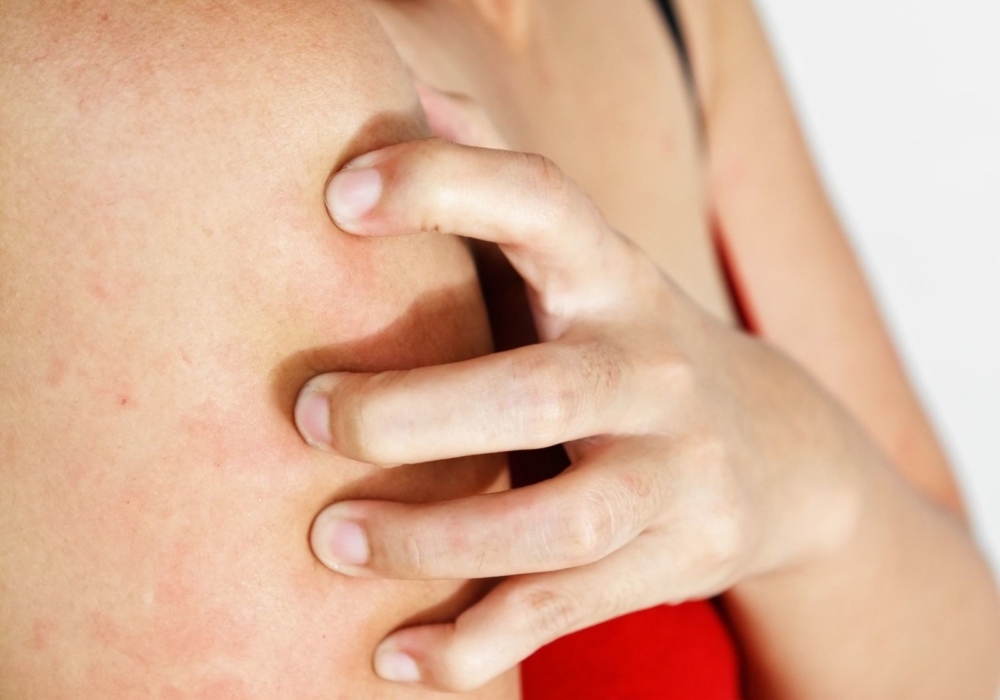
Anti-Inflammatory Foods
Incorporating anti-inflammatory foods into your diet may help reduce skin inflammation and itching. What are some examples of anti-inflammatory foods?
- Fatty fish (e.g., salmon, mackerel)
- Leafy green vegetables
- Berries
- Nuts and seeds
- Olive oil
- Turmeric
Hydration
Staying well-hydrated is crucial for maintaining healthy skin. Aim to drink plenty of water throughout the day to keep your skin hydrated from the inside out.
Identifying Food Allergies
In some cases, itchy skin bumps may be related to food allergies or sensitivities. Keeping a food diary and working with a healthcare provider or allergist can help identify potential dietary triggers.
Psychological Impact of Chronic Skin Conditions
Chronic or recurrent skin conditions can have a significant impact on a person’s mental health and quality of life. How do skin conditions affect psychological well-being?
- Anxiety about appearance
- Depression related to chronic symptoms
- Social isolation due to visible skin conditions
- Sleep disturbances from itching and discomfort
- Stress, which can exacerbate skin symptoms
It’s important to address both the physical and emotional aspects of skin conditions. Mental health support, such as counseling or support groups, can be beneficial for individuals dealing with chronic skin issues.
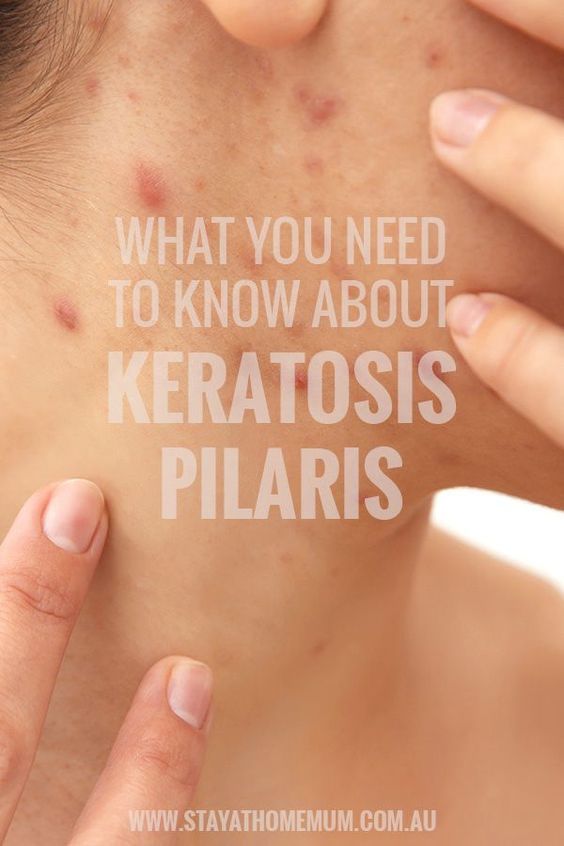
Emerging Treatments for Itchy Skin Conditions
Research into skin conditions and their treatments is ongoing, with new therapies emerging regularly. What are some promising developments in the treatment of itchy skin conditions?
Biologics
Biologic medications, which target specific parts of the immune system, are showing promise in treating severe cases of conditions like chronic hives and eczema.
Microbiome Therapies
Research into the skin microbiome is leading to new treatments that aim to restore balance to the skin’s ecosystem of microorganisms.
Gene Therapy
For certain genetic skin conditions, gene therapy approaches are being developed to correct underlying genetic defects.
Nanotechnology
Nanoparticle-based treatments may offer more targeted and effective delivery of medications to the skin.
While these treatments are still in various stages of development and testing, they offer hope for improved management of chronic and severe skin conditions in the future.
Understanding the various causes of itchy skin bumps, from common conditions like hives to more serious issues like scabies, can help you seek appropriate treatment and relief. Remember to consult with a healthcare professional if you experience persistent or severe symptoms, and consider both medical and lifestyle approaches to managing skin health.
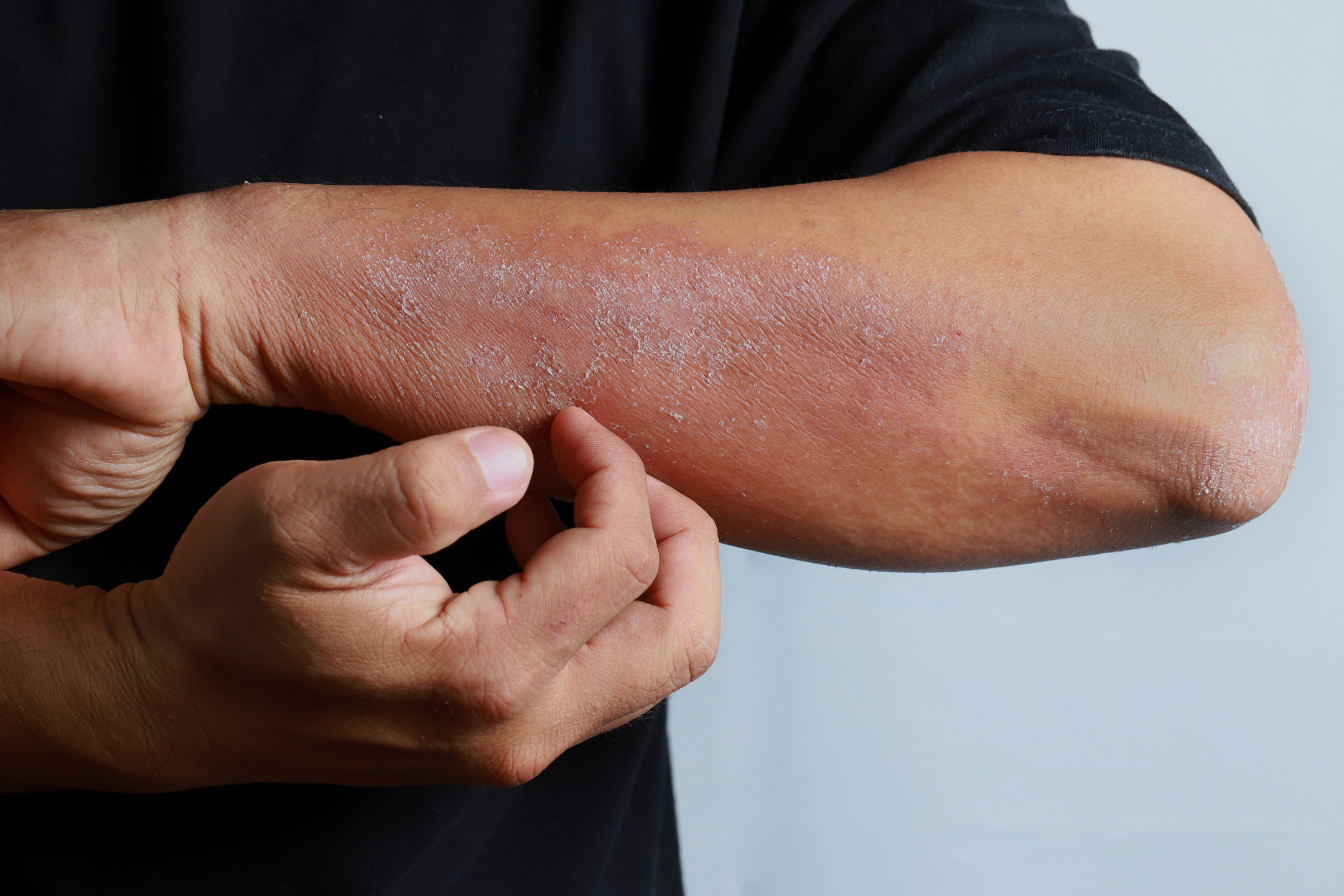
Itchy bumps on skin like mosquito bites: What are they?
Several skin conditions can cause itchy lumps that resemble bug bites. These include allergic reactions, infections, and chronic conditions.
Most people experience this symptom at some point. Itchy bumps can appear as a result of allergies, infections, insects, and, sometimes, nonidentified factors.
However, there is one general principle that the American College of Allergy, Asthma & Immunology recommend people to follow when their skin itches: Do not scratch it.
Additional general self-care practices for itchy skin include:
- bathing frequently in lukewarm water
- using gentle, hypoallergenic soap
- limiting exposure to the sun
- applying cold compresses
- avoiding tight clothing in areas where itchy bumps appear
Understanding the different conditions that can cause itchy bumps on the skin can help people get appropriate treatment. Depending on the cause, treatment can range from avoiding certain foods to taking prescription medications.
Keep reading to learn more about some common causes of itchy bumps that look like mosquito bites and how to treat them.
The medical term for hives is urticaria, and it describes a condition that produces raised itchy areas on the skin. If a person notices bumps on the skin that resemble mosquito bites but has not had any exposure to mosquitos, the cause is probably acute urticaria. The term “acute” means that the condition does not last longer than 6 weeks.
Hives are very common, affecting about 20% of people at some point in their lives. Certain kinds of foods, such as peanuts, tree nuts, and seafood, cause hives in many people due to an allergic reaction. Latex, pollen, insects, various plants, and some medications, such as sulfa drugs or even aspirin, may also cause hives.
Hives cause characteristic red, purple, or skin colored itchy bumps that appear and disappear quickly anywhere on the body. These bumps typically turn white or disappear when a person presses them.
Treatment
The treatment for hives depends on the severity and cause of the rash, but it includes avoiding known triggers. People who are extremely allergic to a trigger — for example, peanuts or certain insects — may need to carry an epinephrine auto-injector, such as an Epipen. This device can stop a potentially life threatening reaction if a person has accidental contact with a known allergen.
Anti-itching lotions and over-the-counter (OTC) antihistamines can provide relief for mild symptoms, while more intense outbreaks may require stronger prescription versions of these drugs or corticosteroids.
Learn more about hives here.
According to the Centers for Disease Control and Prevention (CDC), bed bug bites can resemble bites from other bugs, although they can take as long as 2 weeks to materialize.
People who notice itchy bumps on the skin that resemble mosquito bites should check for:
- other signs of bed bugs
- bed bugs themselves on a mattress or sheet
- dead bed bugs
- blood spots on a mattress or sheet
- the characteristic musty smell associated with bed bugs
If the bites appear in a straight line, they are likely to be due to bed bugs.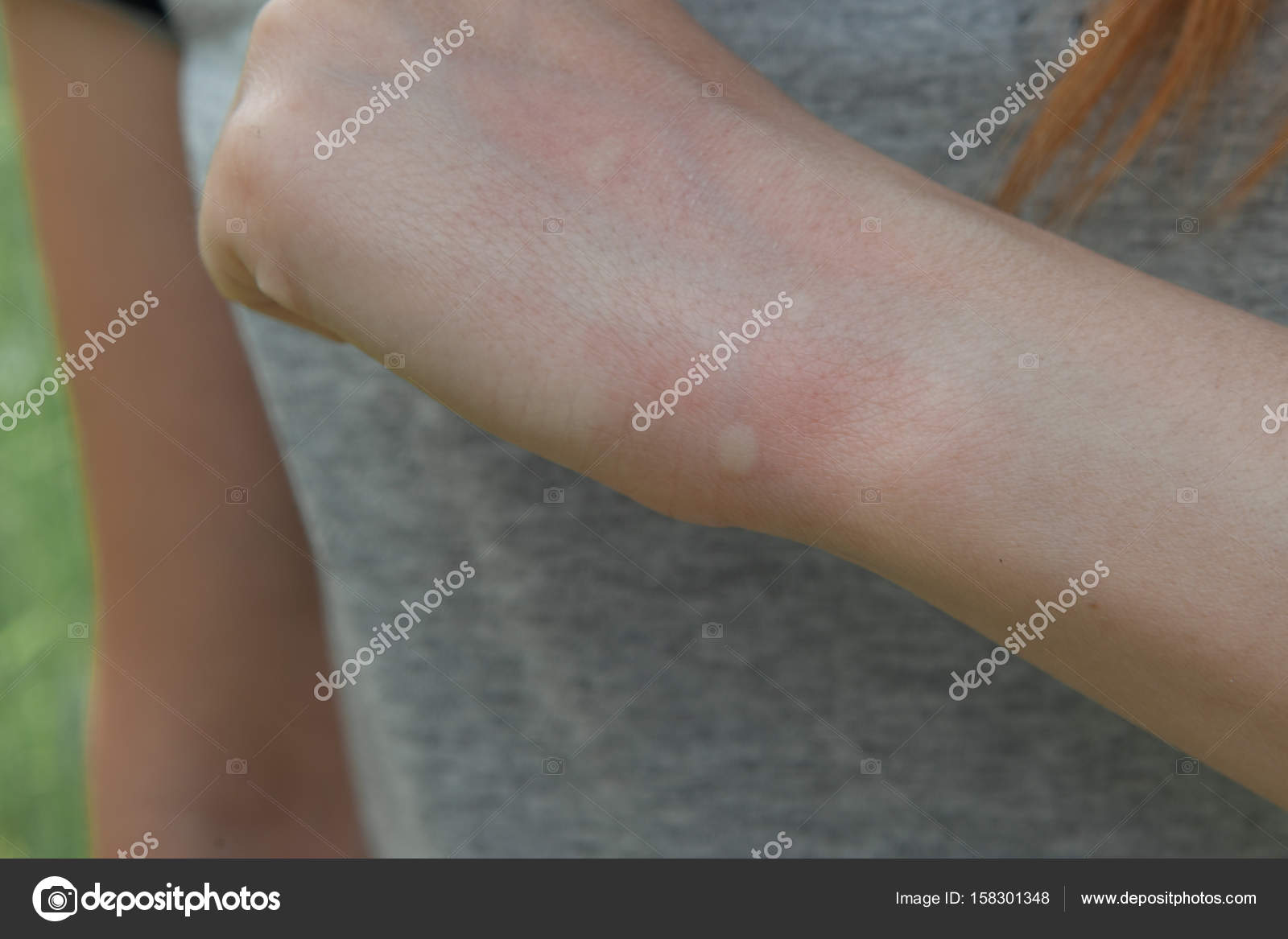 However, bed bug bugs can also appear in more random formations.
However, bed bug bugs can also appear in more random formations.
Treatment
Unless someone has a severe allergic reaction, experts recommend simple self-care practices to treat any bites. These include not scratching, applying OTC antiseptic ointments, and taking antihistamines.
Learn more about bed bugs here.
Contact dermatitis is essentially an allergic reaction that develops when a person’s skin comes into contact with something to which they are allergic, such as latex or certain metals or household products.
It can take 1–2 days for the reaction to develop and 2–3 weeks for symptoms to disappear. Contact dermatitis may hurt as much as it itches, and it may present with inflammation and blisters.
Treatment
Self-care with cold compresses, calamine lotion, and soothing baths can help provide relief.
Prescription medication, such as antihistamines and cortisone, may be necessary if the reaction is severe.
Working with healthcare professionals can help people identify their triggers, which can be complicated.
According to the American Academy of Allergy, Asthma & Immunology, there are more than 3,700 substances known to cause contact allergies. Avoiding triggers is a key part of managing contact dermatitis, along with thoroughly washing the affected area with soap and water after exposure happens.
Learn more about contact dermatitis here.
The human itch mite is responsible for scabies. This mite digs its way through the top layer of the skin and lays eggs. Its tunnels can sometimes be visible on the surface of the skin, where they appear as raised, crooked, skin colored lines. However, the most common symptom of scabies is itchy bumps on the skin. These are like mosquito bites, only smaller.
Sites of the body that this very itchy condition commonly affects include the wrists, the elbows, between the fingers, and behind the knees.
Treatment
Only a prescription lotion will treat scabies effectively, and individuals need to follow the application directions exactly.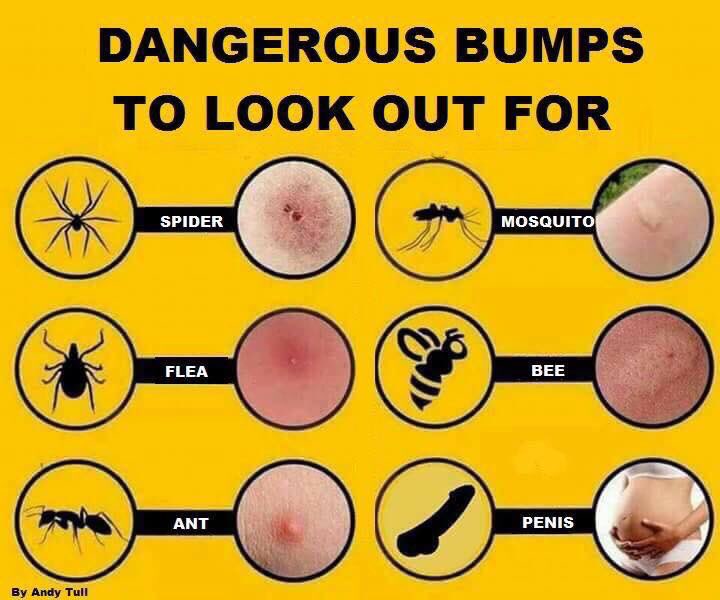 Anyone who has had extensive skin-to-skin contact with someone with scabies should also seek treatment.
Anyone who has had extensive skin-to-skin contact with someone with scabies should also seek treatment.
It is very important that people with scabies thoroughly wash and dry all of their clothes, towels, sheets, bedding, and other household items. Other remedies for scabies may also help.
Learn more about scabies here.
Also known as atopic dermatitis, this common condition causes itchy, red, irritated skin that can sometimes develop bumps. In the long term, it can make the skin thicker, scaly, and flaky, as well as causing it to change color.
Scratching makes eczema worse and increases the risk of infection. Eczema occurs due to a combination of genetic and environmental factors, which prompt the immune system to overreact to certain triggers, such as laundry soap or sweating. It typically affects the face, elbows, knees, scalp, and backs of the hands.
Treatment
According to the National Eczema Association, treating eczema calls for a mix of self-care, OTC drugs, and prescription medications.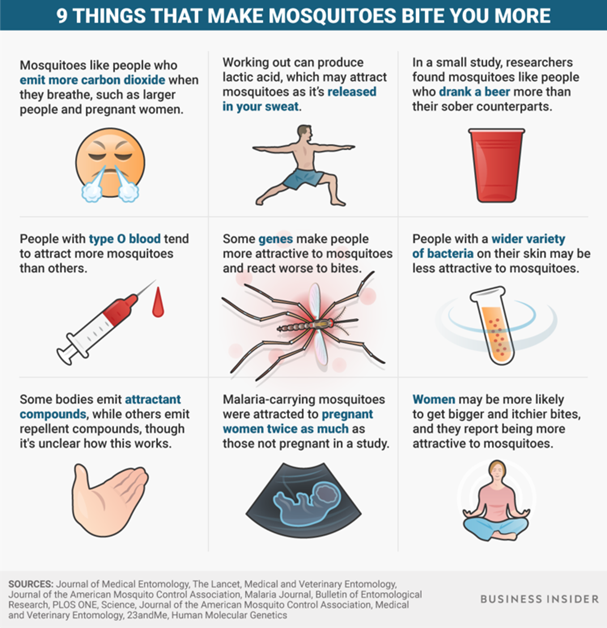 People with eczema can identify and learn to manage or avoid triggers for their outbreaks.
People with eczema can identify and learn to manage or avoid triggers for their outbreaks.
Changing bathing practices and using moisturizer can also help. Prescription lotions, systemic medications, UVB light, and biologics can address more severe symptoms.
Learn more about the different types of eczema here.
Skin problems, such as itchy bumps on the skin similar to mosquito bites, can range from mild to severe.
Some issues, including bed bug bites, can be fleeting, while others, such as allergic reactions to certain foods, are signs of a permanent condition. However, most skin problems generally respond well to treatment.
If the symptoms do not improve with self-care practices, people should see a medical professional to determine what is causing the outbreak and how to treat it.
Hives (Urticaria): Causes, Treatment and Prevention
Nationwide Children’s Hospital
Overview
Signs & Symptoms
Causes
Treatment
What to Expect
When to Seek Help
What Are Hives?
Hives are red, raised bumps on the skin that can be itchy.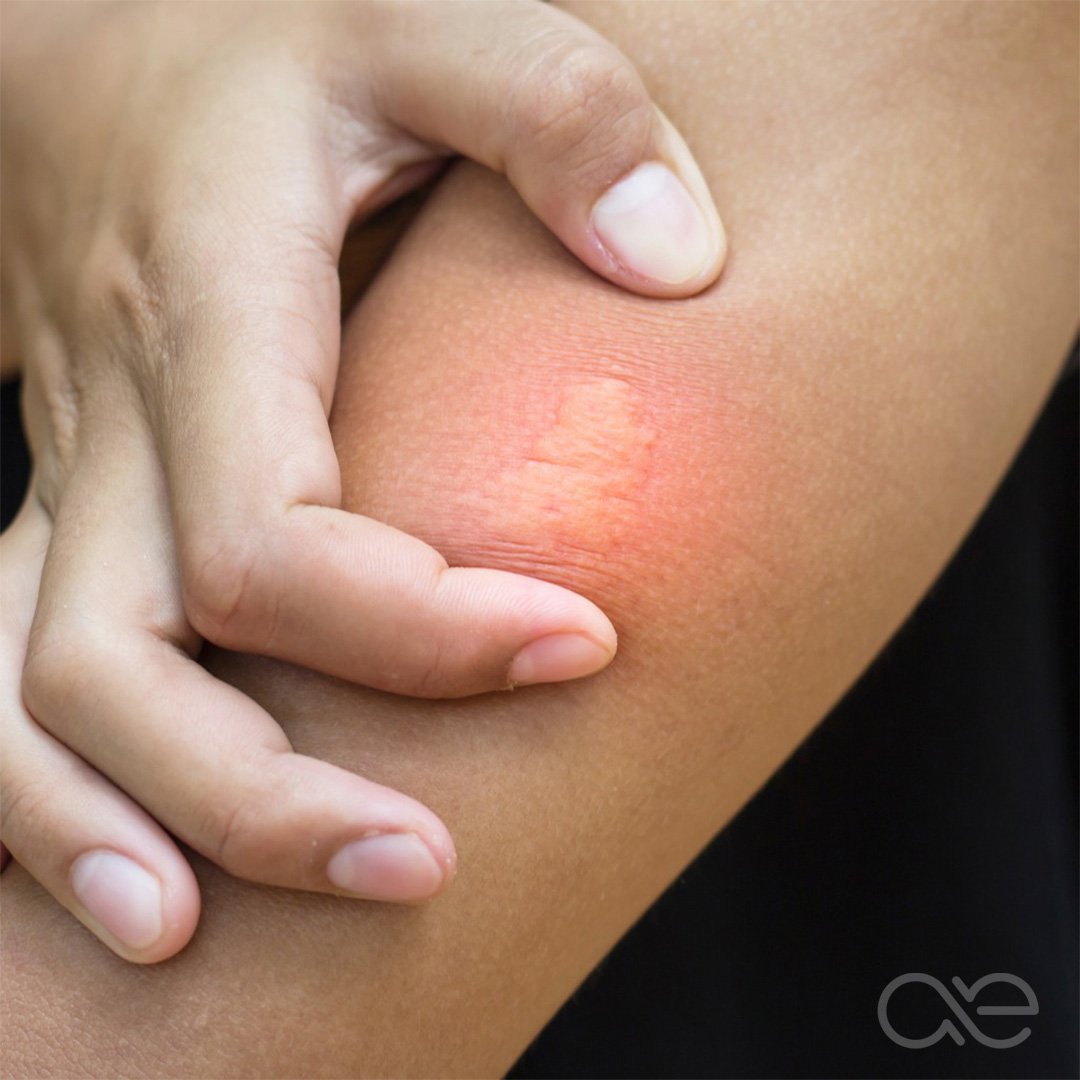 Hives are also called urticaria. About 1 in 5 people will get hives at some point in their lives.
Hives are also called urticaria. About 1 in 5 people will get hives at some point in their lives.
What Are the Signs and Symptoms of Hives?
Hives can be found anywhere on the body. They can be small, like mosquito bites, or several inches wide. Even if they look different, hives often have common symptoms.
- People may have one hive or groups of hives that cover large areas of the body.
- Hives can move around on the body. They may start in one place, then move to another place on the body.
- Hives may go away quickly or come and go for many weeks or months.
- Skin swelling is common with hives. It may happen on the lips, ears, eyelids, fingers, or toes. This is common and not dangerous.
- Less commonly, hives can occur as part of a more severe allergic reaction called anaphylaxis. Anaphylaxis can cause the airway to swell, making it hard to breathe. This is a life-threatening reaction that needs to be treated right away.

What Causes Hives?
Hives happen when the body releases a chemical called histamine. It can be released because of allergies or other things, like stress, infections, or some illnesses. Whatever is causing histamine to be released is called a trigger.
- Hives not related to allergies are more common. Their triggers are:
- Viruses or infections, like a cold, strep throat, or a urinary tract infection (UTI).
- Emotional stress, like anxiety, anger, fear, or sadness.
- Exercises that make the body warm.
- Vibrations from using a lawn mower, horseback riding, or mountain biking.
- Temperatures that are too hot or too cold.
- Sunlight or tanning beds (sunlamps).
- Pressure on the skin, like being rubbed too hard or scratched, or by wearing clothes that are too tight.
Hives that are related to allergies are less common. Their triggers are:
Their triggers are:
- Foods or medicines (anaphylaxis may occur) – Symptoms include nausea, throwing up (vomiting), mouth/throat swelling, and trouble breathing. This can be very dangerous.
- Some common foods that cause allergies include eggs, peanuts, tree nuts, milk, and shellfish.
- Some medicines that cause allergies include aspirin, ibuprofen (Advil®, Motrin®), and naproxen sodium (Aleve®).
- Contact with the skin that can lead to irritation. These are usually not dangerous.
- Plants, grasses, weeds
- Acidic foods or sauces
- Scents or fragrances (soaps, detergents, lotions)
- Animal dander
- Latex or other materials
When to Get Emergency Help
Call 911 or take your child to the closest emergency room if they have hives and any symptoms of anaphylaxis:
- Trouble breathing, swallowing, or talking
- Swelling of the mouth or tongue
- Nausea or vomiting
If they have an epinephrine auto-injector, like EpiPen®, Auvi-Q®, or Adrenaclick®, use it right away.
How Are Hives Treated?
Treatment depends on how bad the itching is. Even with treatment, hives can last days to weeks. The goals of treatment are to:
- Control the itching
- Avoid things that may trigger hives
For mild hives:
- Give an over-the-counter (OTC) antihistamine each day. Some examples are:
- Loratadine (Claritin®)
- Fexofenadine (Allegra®)
- Cetirizine (Zyrtec®)
- Levocetirizine (Xyzal®)
- Do not use Benadryl® creams. These may cause irritating rashes.
- Cool the skin using an ice pack or a cold bath or shower.
- Distract your child by playing games, singing songs, or reading books.
- Avoid known triggers, like animal dander or fragrance.
For severe hives:
- Give a higher dose of antihistamines or steroids, like prednisone. Oral steroids should not be used a lot.
 They may make hives worse when you stop taking the medicine.
They may make hives worse when you stop taking the medicine. - See a doctor or health care provider. They may prescribe a medicine, like Xolair® shots (injections), if you have long-term (chronic) hives.
Living With Hives
Living with hives isn’t easy, especially if you don’t know what’s causing them. It may help if you write down events that happened right before the hives appeared. This can help you and your child make a plan to keep the hives from coming back.
Depending on what’s causing your child’s hives, you can keep their hives from getting worse by having them:
- Avoid scratching or rubbing their skin.
- Wash their hands after touching pets or animals.
- Wear loose-fitting clothes. • Wear warm clothes.
- Wear sunblock and long sleeves and pants in the sun.
- Avoid contact with cold water if they’re sensitive to cold.
- Use mild, unscented soap on their skin and for washing clothes.

When to Call the Doctor
Call the doctor or health care provider if your child’s hives get worse or prescribed medicine isn’t helping.
Hives (Urticaria) (PDF), Spanish (PDF), Somali (PDF)
HH-I-82 11/89, Revised 2023, Nationwide Children’s Hospital
Next Steps
Request an Appointment
or
Get a Second Opinion
You Might Also Be Interested In
Blog
Allergic Reactions to Stings and Bites
The day before I was to have my senior picture taken in high school, I was stung on my right hand by a wasp. My entire hand and wrist swelled to about three times its normal size.
My entire hand and wrist swelled to about three times its normal size.
Podcast
PediaCast 039: Pediatricians, Hives and Sleep Apnea
In this episode of PediaCast, Dr. Mike discusses hives, sleep apnea and slimming down for summer. We’ll also answer some user questions and talk about board-certified pediatricians.
700 Children’s Blog
If you have a child – or care for a child – 700 Children’s was created especially for you. Our blog gives you access to the most current pediatric news and research.
Mosquito bite: how to anoint and how to get rid of itching
How to take care of the skin in case of a mosquito bite and what health risks are important to know? Says a dermatologist.
Margarita Gekht, Leading Dermatologist, Butterfly Children Charitable Foundation, Lecturer at the Skill for Skin Online Academy of Skin Problems
Advertising on RBC www.adv.rbc.ru
- How to identify a mosquito bite
- Why does it itch
- What to do after being bitten
- How to relieve itching
- Possible complications
- Repellents
- Medical treatment
What does a mosquito bite look like?
Female mosquitoes have a long proboscis with which they pierce the skin, inject saliva through it and suck in blood. The human body reacts to saliva with blistering and itching.
Some people react to the sting lightly, others more severely, and may experience large swelling and painful redness at the site of the sting.
General symptoms of a mosquito bite:
- blister that appears on the skin a few minutes after the bite;
- edema;
- redness of the skin;
- itching.

If the bite is in an area close to the capillary network, dark spots that look like bruises may appear in its place.
Sometimes under certain circumstances, more often due to the peculiarities of the immune system, in addition to the general symptoms, more severe reactions can develop, which lead to the following symptoms. They can be isolated or included in the structure of Skeeter’s syndrome:
- large area of swelling and redness;
- subfebrile or febrile fever;
- swollen lymph nodes.
Skeeter syndrome refers to a severe allergic reaction to mosquito bites. It is based on an allergic reaction to proteins contained in mosquito saliva. Most people have little reaction to mosquito bites, but people with skeeter syndrome are very sensitive to them and may develop a fever. In Skeeter’s syndrome, the blisters at the site of the bites tend to swell to a very large diameter, leading to swelling of the skin along with the fever.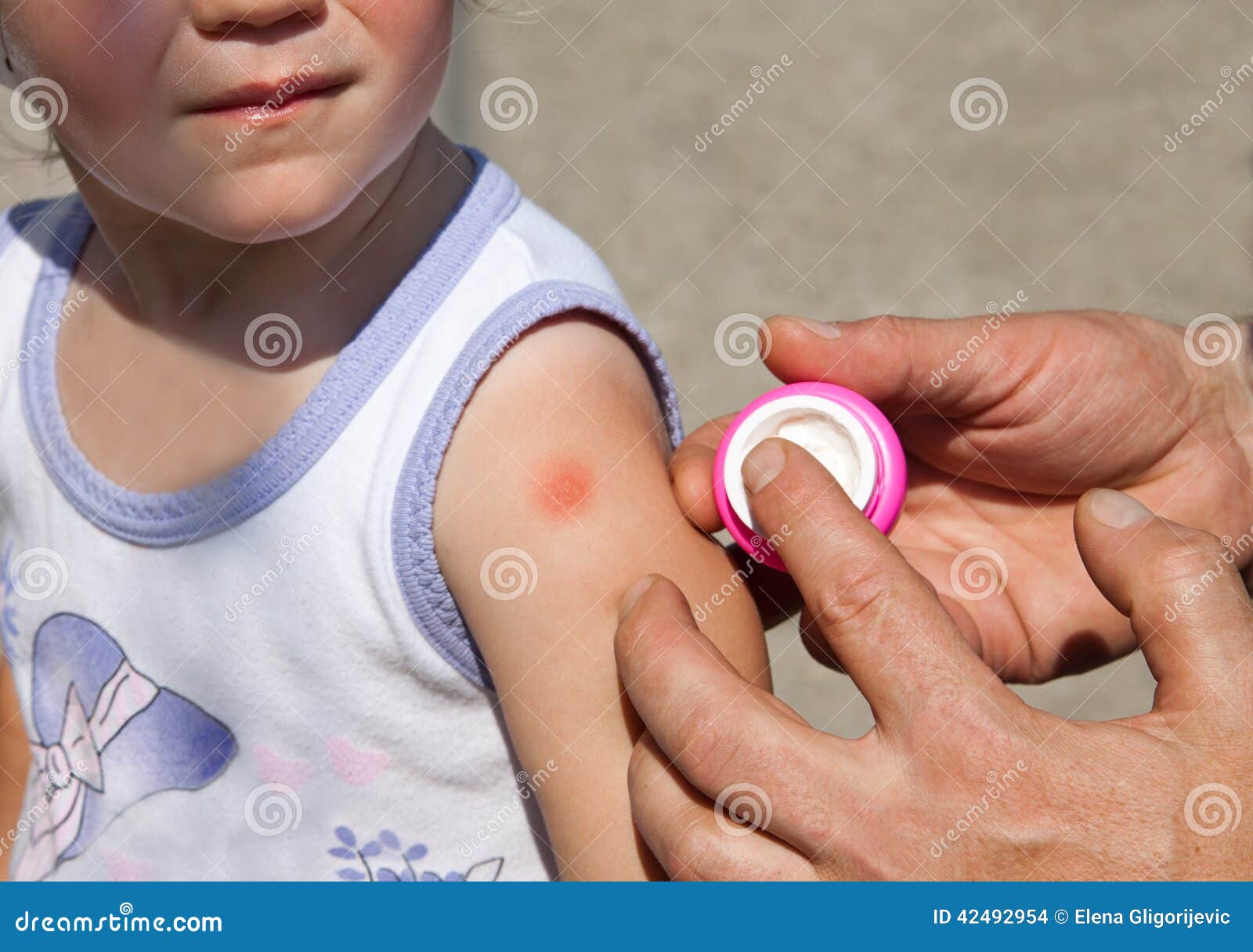 Usually the reaction builds up within a few hours.
Usually the reaction builds up within a few hours.
Why itching develops after a mosquito bite
The causes of itching in mosquito bites are not well understood, but scientists have put forward hypotheses about three mechanisms. They are based on the assumption that the itch that occurs after a bite is associated with the components of the saliva of the insect.
According to the first hypothesis, mosquito saliva components cause an allergic reaction when they enter the skin. This is because one of the main components of mosquito saliva is the biologically active substance histamine, which is responsible for allergic reactions, including swelling, itching and redness. As a result, the classic picture of itching develops.
The second hypothesis is based on an IgE-dependent hypersensitivity reaction to salivary gland components. This means that certain people have special receptors on their own antibodies that are turned on during the introduction of the allergen (mosquito saliva). These proteins are called IgE. They are the first to bind to mosquito saliva proteins, transmit an impulse to mast cells of the skin, which in turn release histamine, resulting in itching.
These proteins are called IgE. They are the first to bind to mosquito saliva proteins, transmit an impulse to mast cells of the skin, which in turn release histamine, resulting in itching.
Proponents of the third hypothesis believe that salivary gland components modulate the inflammatory response independently of IgE proteins.
© Shutterstock
How to get rid of mosquito bites
The first step is to apply mosquito repellent to any potentially exposed skin area. This measure ensures that there are no more bites. The alternative is to install a physical barrier for the mosquitoes, such as a mosquito net, or return indoors.
After applying protection, the bite area can be treated with ice or cream/gel with an antihistamine component. Itching will likely continue, but every effort should be made to avoid scratching the bite as this will cause further irritation.
Finally, look for any potential symptoms of illness such as fever, joint pain, or headache. This is to make sure you don’t get an infection.
This is to make sure you don’t get an infection.
Folk remedies for mosquito bites
- Soda. Mix a tablespoon of baking soda with enough water to make a paste. Apply it on a mosquito bite, wait ten minutes and wash off.
- Oatmeal. Grind oatmeal to a floury consistency. When mixed with water, a colloidal suspension will be obtained – it is this part of the oatmeal that must be added to the bath (it should also be part of creams). Fine particles of colloidal oatmeal settle on the skin, retaining moisture and relieving itching.
- Basil. This fragrant herb has a dual function. First, it repels mosquitoes. Therefore, it can be planted on the windowsill. Secondly, according to some studies, basil soothes the itching from a bite. Crush a few leaves and rub gently into the skin.
- Aloe Vera. The sticky, clear gel found inside the aloe vera plant is used to treat many ailments.
 It has also been proven to be an effective remedy for itching.
It has also been proven to be an effective remedy for itching. - Chamomile. This herb is used to relieve anxiety and insomnia. It is believed that applying a decoction of chamomile to the skin can soothe rashes and irritations. However, there is no exact data on the effectiveness of chamomile. Also, if you are allergic to ragweed, you may also have a reaction to chamomile. Be careful – in the composition of creams, chamomile is called “azulene”.
- Menthol. Menthol products cool the skin, which may temporarily relieve itching.
© Shutterstock
Complications of mosquito bites
- Impetigo. Local bacterial infection. May be caused by scratches at the site of the bite. More common with itchy bites.
- Cellulite . In this case, the bacterial infection spreads to the skin. It looks edematous, becomes hot and painful to the touch and looks like an orange peel.

- Lymphangitis. This bacterial infection spreads through the lymphatic channels. Visually looks like a red line going up the arm or leg. This case is more serious because the infection can enter the bloodstream and cause blood poisoning (sepsis).
When to See a Doctor
If mosquito bites are accompanied by more than just redness and itching, but fever, headache, body aches and other signs of infection, see a doctor.
Mosquito bite prevention
- Treat clothing and equipment with permethrin repellent.
- Choose long-sleeved shirts and trousers when choosing clothes. Mosquitoes cannot bite the skin if it is covered with a dense cloth.
- Choose closed shoes.
Another way to stop mosquitoes from biting
Mosquitoes need water to lay their eggs. Once a week, empty and wipe, turn over, cover, or discard items that contain water, such as paddling pools, bird baths, flower pots, or trash cans.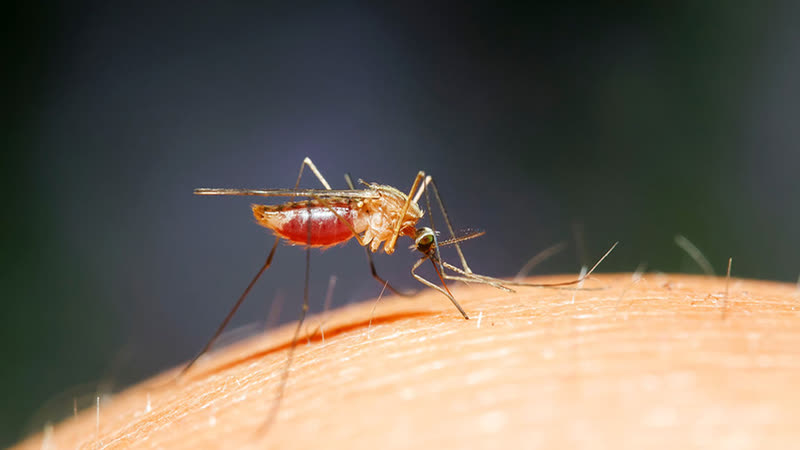
Mosquitoes are also attracted to body heat and body odors caused by sweat and lactic acid.
How the active ingredients of repellents work
DEET
N, N-diethyl meta-toluamide (DEET) is one of the most commonly used mosquito repellent chemicals. Research shows that it is one of the most effective. DEET affects insect receptors that detect carbon dioxide and body odor, causing mosquitoes to stop recognizing humans. It comes in a variety of forms, including liquids, sprays, lotions, and wristbands.
Picaridin
Picaridin is a new type of insect repellent. It works in a similar way to DEET, preventing mosquitoes from recognizing their prey, but contains fewer potentially toxic substances, making it considered a safe protection option for babies under six months of age.
Eucalyptus and Lemon Oils
Eucalyptus or Lemon Oils are a good option for those who prefer a natural, chemical-free repellant.
© Blanchi Costela / Getty Images
Medical treatment of mosquito bites
Topically:
- Apply specialized gels and emulsions containing antihistamines two to three times a day.
- For severe redness and itching, a cream or emulsion containing 1% hydrocortisone can be used once or twice a day for two to three days. If symptoms persist or worsen, a doctor should be consulted.
- Calamine and zinc oxide products can be used for children under two years of age. From the age of two, a lotion containing menthol, zinc oxide and calamine is suitable.
Oral:
- First generation antihistamines may be used in acute inflammatory reactions.
- For subacute stage and mild itching, 2nd generation antihistamines.
Both generations are available in both drop and tablet form.
Allergy pills: a review of modern drugs
DIROFILARIOSIS – A PARASITIC DISEASE
Published: 06/17/2015
Mosquito season has begun.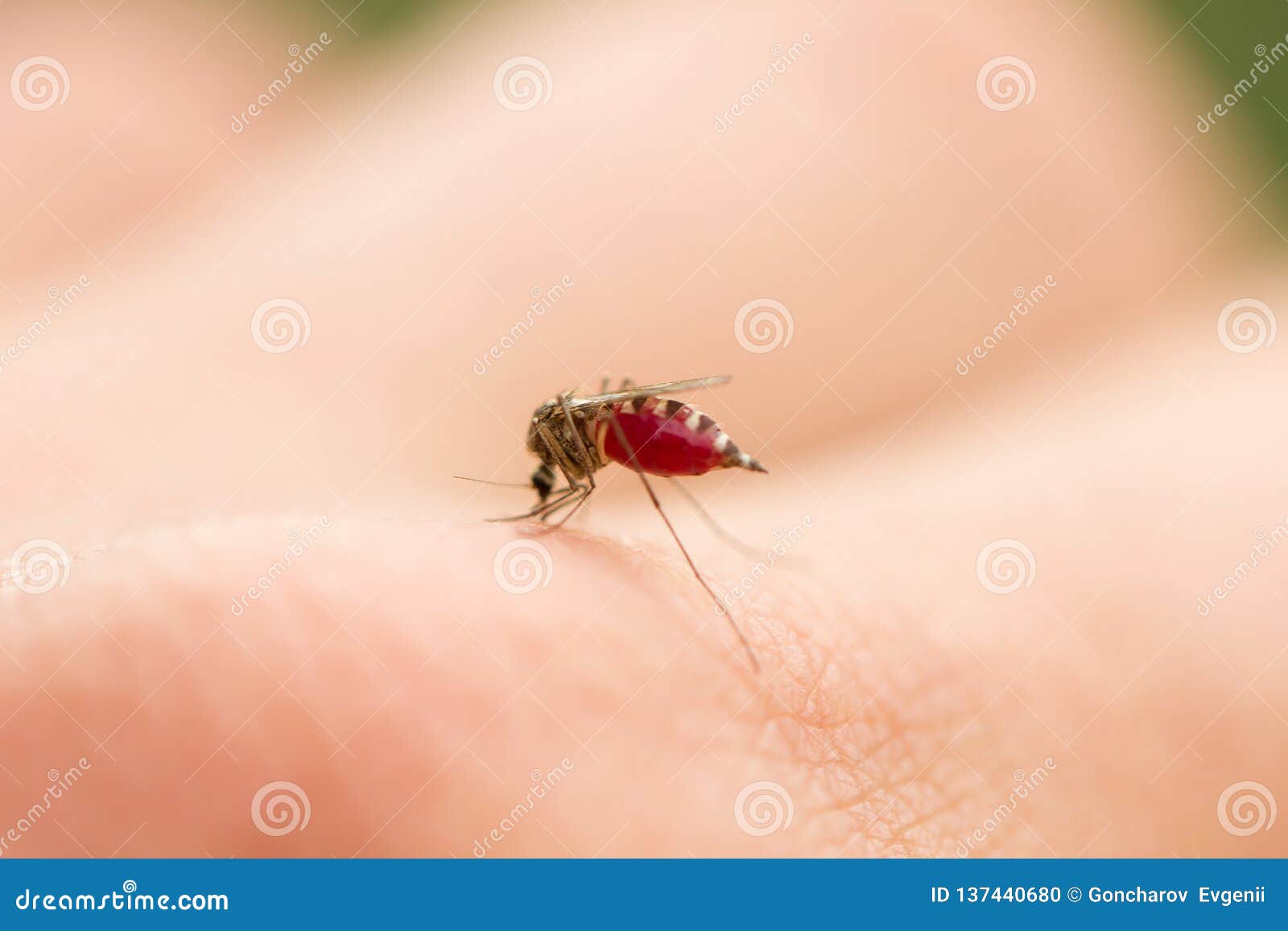 And if you
And if you
have not yet felt the obsessive attention of little bloodsuckers in their own
apartment, then, once in nature, you will definitely encounter them. To such
the meeting does not hurt to prepare, especially if there are atypical reactions to
mosquito bites. In addition to the usual allergy to an insect bite (itching, swelling,
redness), symptoms of general malaise, pain at the bite site,
unpleasant and alarming “movements” under the skin. It might not be
other than dirofilariasis .
Dirofilariasis is more common in areas with a warm and humid climate:
southern Europe, the countries of the Balkan Peninsula, Turkey, Africa, India. In Russia, dirofilariasis was registered in the southern
regions: in the Krasnodar and Stavropol Territories, the republics of the Northern
Caucasus, Astrakhan, Volgograd, Rostov, Lipetsk, Voronezh
regions, as well as Primorsky and Khabarovsk territories. In recent years
the parasite spread in
more northern regions of Russia.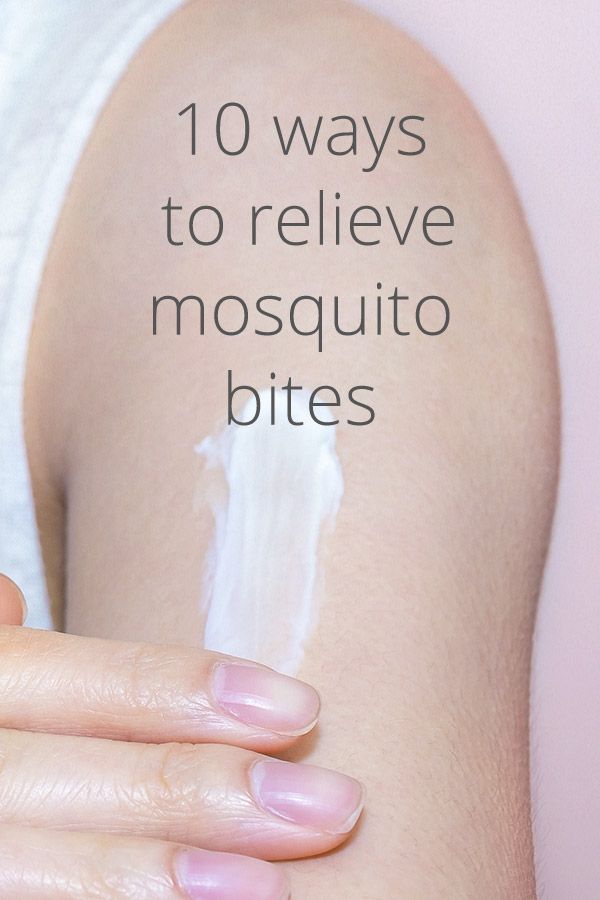 In Belarus annually
In Belarus annually
3–7 cases of dirofilariasis are detected. The most common disease occurs in
Gomel region.
Dirofilariasis —
a rare type of helminthiasis, in which the parasite is introduced under the skin and migrates along
body. For this disease
characterized by slow development and a long chronic course, accompanied by
complications in the heart, liver and kidneys.
Pathogen – immature nematode
Dirofilaria repens (roundworm). The parasite has a filamentous body
light yellow in color, tapering towards both ends, their larvae, called dirofilariae,
have a length of 0.22-0.30 mm. The length of an adult female
17–20 cm, width – 0.3–0.7 cm. Males are slightly smaller – 7 cm and 0.45 cm, respectively.
Microfilariae vector are
mosquitoes of various types incl. and mosquitoes that live year-round in warm and
basements of apartment buildings. They fly into the ventilation
systems in apartments and feed on humans and pets. Thus,
if there is a sick dog or cat in a city apartment, the transmission of infestation
can be carried from them to the person.
Main sources
infestations for humans are dogs. The disease also occurs in
foxes, ferrets, cats. Infection of dogs and other carnivores occurs in
in the process of feeding on them mosquitoes infested with dirofilaria larvae. IN
within 3 months, the larvae develop in the subcutaneous fat and connective
animal tissues, shed twice and penetrate into the bloodstream. By circulatory
system, the larvae migrate to the heart and pulmonary artery, where after 3-4 months
reach sexual maturity and become capable of producing larvae. Female
Dirofilaria gives birth to up to 30,000 larvae every day. microfilariae,
circulating in the blood of infested animals are non-invasive and do not
pose an immediate danger to other animals or humans.
For further
development, these parasites must be ingested by mosquitoes. The period of development of the larva in a mosquito to the invasive stage is about 17 days.
A person is infected by the bite of a mosquito that carries
contain dirofilaria larvae. Infestation
Infestation
people, as a rule, occurs during agricultural work or recreation on
nature, where there are affected animals and mosquito colonies. More often
this happens during the period of insect activity (May-September). Increasing quantity
identified invasions in humans in recent years due to the growth of vagrant
animals, their mass migration between settlements, the process
urbanization, climate warming. All of these factors contribute to the transmission
parasite from wild animals to domestic and human.
Usually in the human body parasitizes one
helminth.
In rare cases, 2-3 helminths parasitize humans,
which, apparently, is associated with repeated cases of infection. In humans
the female helminth grows into an adult, but the “children” – dirofilaria –
does not give birth, therefore this disease is from a person
not transmitted to humans. Once in the body, the parasite reaches
largest in six months and is located under the skin (mucosa
shell), where a capsule of connective tissue is formed around it. IN
IN
further the female gradually dies and collapses. The parasite is very
active: moves in the body at a speed of 10–30 cm per day. Clinical
symptoms
From
from the moment of infection until the manifestation of the main typical clinical symptom (movement of the pathogen, or
seals with it) passes from 1 month
up to several years.
Dirofilariasis manifests itself by migration through the body
parasite.
Later
a few days at the site of a mosquito bite, a small dense formation appears,
which may be accompanied by itching. Then it gradually increases
reaching a diameter of up to four centimeters. There is slight redness and
swelling of the skin over it, increased itching and pain. With the development of inflammation, the nodule
softens, suppurates, an abscess may form, on top of which
a hole appears from which the end of the worm protrudes.
When the parasite moves to its old place of residence, no
no traces remain, and a seal appears in the new area.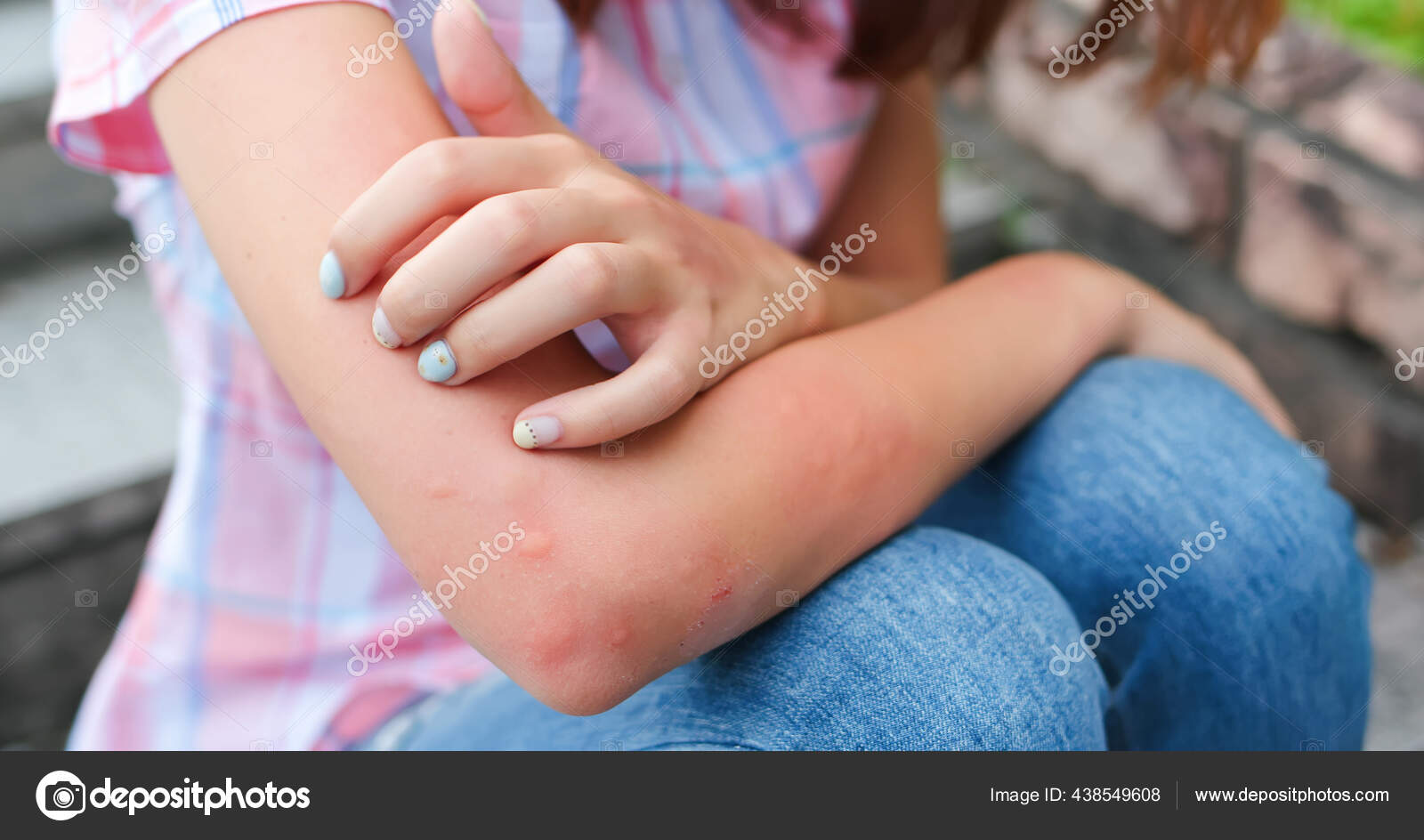 There are symptoms of general intoxication: weakness, malaise,
There are symptoms of general intoxication: weakness, malaise,
headache, nausea, fever. An important symptom is migratory on palpation.
the knot is very mobile. Such a nodule persists for 2-3 months and periodically
disappears. All these sensations are present until the helminth around
a capsule will form.
Cases of localization of dirofilarial nodules in the area
head, neck, abdomen, popliteal region, thigh and other places.
Almost half of the cases of dirofilariasis involve
in the pathological process of the organs of vision.
Eye damage may be the only manifestation of the disease.
Helminths are localized and migrate in the subcutaneous tissue of the eyelid or under
conjunctiva. A knot (granuloma) is formed around the helminth, edema develops.
With the localization of the helminth in the subcutaneous tissue of the eyelids, a limited
tumor-like swelling, as a rule, with mild inflammatory
phenomena. The presence of the parasite under the conjunctiva causes phenomena
conjunctivitis.


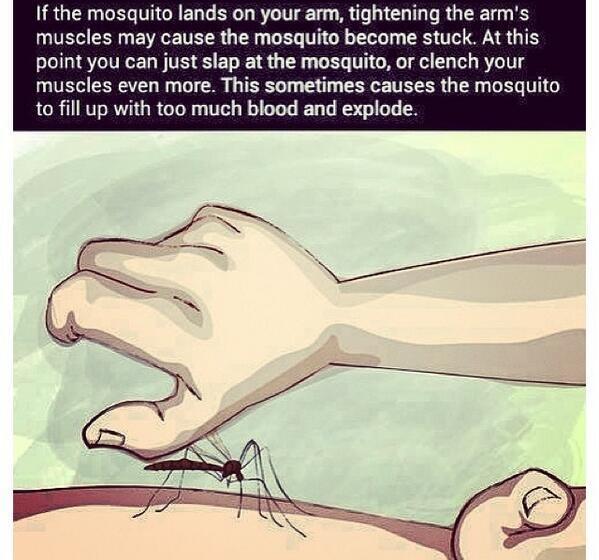 They may make hives worse when you stop taking the medicine.
They may make hives worse when you stop taking the medicine.

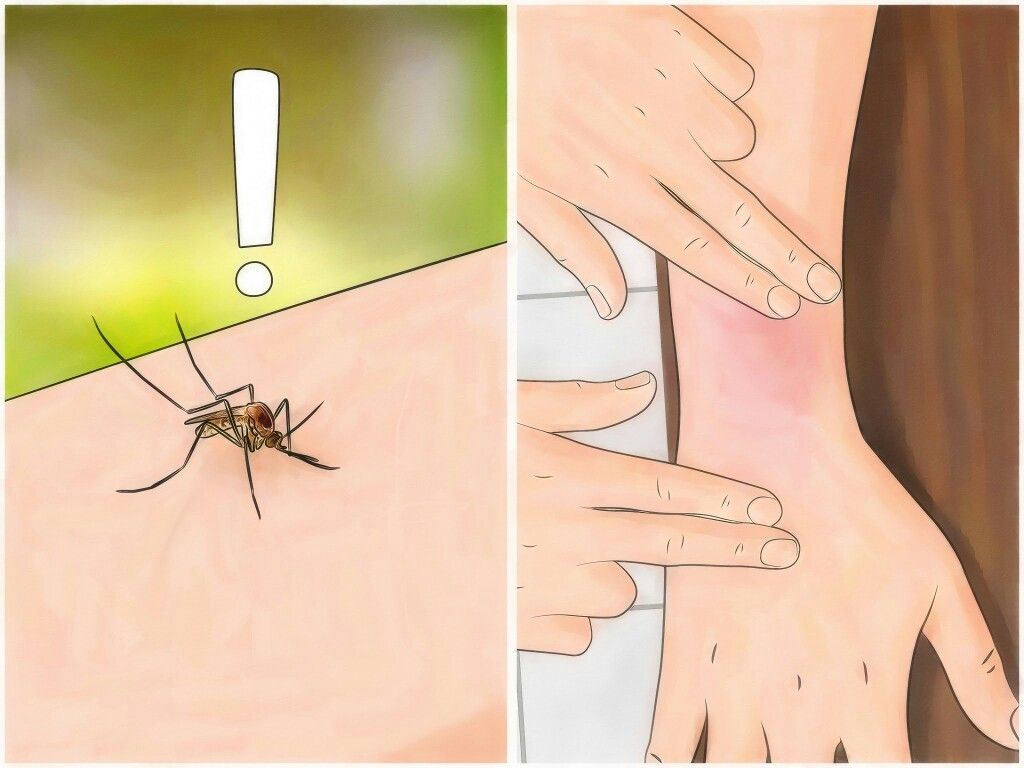 It has also been proven to be an effective remedy for itching.
It has also been proven to be an effective remedy for itching.